What's in a custom MADE WETsuit?
Materials and Construction
The high-quality materials and meticulous craftsmanship of custom made Hi Wetsuits create a unique performance not found in typical off-the-rack styles
1
What's Neoprene?
To choose the best wetsuit, it's important to understand a thing or two about its most important ingredient - neoprene!
The material we are familiar with is actually a sandwich, where neoprene is the meat and some type of fabric is the bread on each side. Neoprene itself is flexible, insulating black rubber. It is the fabric laminated to it that gives it the color, as well as affecting performance characteristics such as flexibility and durability.
The material we are familiar with is actually a sandwich, where neoprene is the meat and some type of fabric is the bread on each side. Neoprene itself is flexible, insulating black rubber. It is the fabric laminated to it that gives it the color, as well as affecting performance characteristics such as flexibility and durability.

The diagram above shows a chunk of neoprene lined on both sides. But another option is to line one side, and leave "cells" of neoprene on the other side. As you can see from the image, the texture of the cells grabs onto your skin, making for a warmer wetsuit. In fact, it clings so well that to put it on you will need to make a concoction of diluted hair conditioner and water to lubricate the suit. It's also more fragile than lined neoprene, and care must be taken when handling the suit.
2
Lined vs. Cell
A crucial decision in the selection of your suit is whether you prefer a Lined (aka Closed Cell) or Open Cell (aka Cell) interior of your suit. Each has their own pros and cons.
If the inside of your wetsuit is lined, there will be a fabric interior against your skin. This is the most durable option. Also, it goes on easy, without a requirement for lubrication. However, it is not as warm as the open cell option.
If you choose an open cell interior, there will be raw rubber against your skin. The lack of fabric increases the stretchiness of your suit. The rubber sticks to your skin and is therefore 15% warmer than lined. However, due to that stickiness, you will need to use lubrication, such as hair conditioner, to get into your suit. Open cell is also somewhat less durable than a lined suit. The raw rubber is easier to scratch and cut than the fabric of a lined suit.
As a general summary, lined wetsuits are a durable and user friendly option, while open cell suits confer high performance. Our Yamamoto 45 suits are open cell, while our Sheico suits are lined. Each has advantages, the choice is yours!
If the inside of your wetsuit is lined, there will be a fabric interior against your skin. This is the most durable option. Also, it goes on easy, without a requirement for lubrication. However, it is not as warm as the open cell option.
If you choose an open cell interior, there will be raw rubber against your skin. The lack of fabric increases the stretchiness of your suit. The rubber sticks to your skin and is therefore 15% warmer than lined. However, due to that stickiness, you will need to use lubrication, such as hair conditioner, to get into your suit. Open cell is also somewhat less durable than a lined suit. The raw rubber is easier to scratch and cut than the fabric of a lined suit.
As a general summary, lined wetsuits are a durable and user friendly option, while open cell suits confer high performance. Our Yamamoto 45 suits are open cell, while our Sheico suits are lined. Each has advantages, the choice is yours!
3

Located in Osaka, Japan is one of the most highly regarded neoprene manufacturers- Yamamoto. They are respected not only for the quality of their neoprene but for their clean and eco-friendly manufacturing practices. Many people have heard of Yamamoto, but not everyone understands that "Yamamoto" alone is not a type of neoprene. Just as a car manufacturer produces many different models, a neoprene manufacturer makes many different grades of neoprene.
After independent testing, in conjunction with numbers supplied by Yamamoto themselves, we have chosen to use Yamamoto 45. This neoprene is seldom found in the suits hanging in your local stores, which nearly always utilize the cheaper and lower performance Yamamoto 39. Testing has shown that Yamamoto 45 insulates 20% better than Yamamoto 39. It is 40% more stretchy and resists compression about 60% better.
To accentuate the high-performance characteristics of Yamamoto 45, we stock it with an "open-cell" interior (see below). The exterior is available in two types. 1.) Solid colors are available in Yamamoto's Lycra, which is 20% polyurethane and can stretch 280%. 2.) Hyperflex camo stretches up to 400%, and its soft feel is hard to quantify but worth mentioning!
After independent testing, in conjunction with numbers supplied by Yamamoto themselves, we have chosen to use Yamamoto 45. This neoprene is seldom found in the suits hanging in your local stores, which nearly always utilize the cheaper and lower performance Yamamoto 39. Testing has shown that Yamamoto 45 insulates 20% better than Yamamoto 39. It is 40% more stretchy and resists compression about 60% better.
To accentuate the high-performance characteristics of Yamamoto 45, we stock it with an "open-cell" interior (see below). The exterior is available in two types. 1.) Solid colors are available in Yamamoto's Lycra, which is 20% polyurethane and can stretch 280%. 2.) Hyperflex camo stretches up to 400%, and its soft feel is hard to quantify but worth mentioning!
4

Sheico L
The largest manufacturer of neoprene in the world is Shieco, based in Taiwan. They grew to be the world's leading factory because they know what they are doing and offer some excellent options! Much like Yamamoto described above, Sheico produces a variety of neoprene grades. Our tests show that Sheico L Foam insulates just as well the acclaimed Yamamoto 45 (and 30% better than generic Chinese neoprene). It is comparable in density and compression resistance to Yamamoto 45 (and nearly 70% greater than Yamamoto 39).
We choose to enhance the durability of Sheico by offering it with a lined interior. Sheico produces a nylon "pile" lining that feels soft and stretches 350%. This makes for a user-friendly and durable suit while maintaining a stretch similar to that of "open-cell" rubber. The outside of our Sheico neoprene is Neospan, a nylon/spandex blend that is lightweight (180 gsm) and stretchy (300% elongation).
We choose to enhance the durability of Sheico by offering it with a lined interior. Sheico produces a nylon "pile" lining that feels soft and stretches 350%. This makes for a user-friendly and durable suit while maintaining a stretch similar to that of "open-cell" rubber. The outside of our Sheico neoprene is Neospan, a nylon/spandex blend that is lightweight (180 gsm) and stretchy (300% elongation).
5
Construction Methods
There are several intricate details to the cut of our wetsuit that makes it warmer, more comfortable, and more durable than a mass-produced suit.
1. Face seal with a relaxed jaw for comfort and ease of equalization, as well as a chin that is high and features some concavity so it actually stays on!
2. Hood reaches to the clavicle to enable contouring and allow more seam-free, stretchy neoprene for your head to go through easily.
3. No seam on the back of the neck, which allows your head to go through more easily and promotes mobility.
4. The underarm panel naturally allows for the vertical extension of the arm.
5. The midsection is contoured on the front, not just down the side, which creates a better fit for however your tummy is shaped.
6. Back curvature makes the suit sit on you properly and allows you to bend.
7. Side panels allow contouring at the small of the back.
8. High waist seal to protect the core.
9. Articulation at top of the leg for a range of motion
10. Carefully designed knee, to maximize durability and reduce chafing.
1. Face seal with a relaxed jaw for comfort and ease of equalization, as well as a chin that is high and features some concavity so it actually stays on!
2. Hood reaches to the clavicle to enable contouring and allow more seam-free, stretchy neoprene for your head to go through easily.
3. No seam on the back of the neck, which allows your head to go through more easily and promotes mobility.
4. The underarm panel naturally allows for the vertical extension of the arm.
5. The midsection is contoured on the front, not just down the side, which creates a better fit for however your tummy is shaped.
6. Back curvature makes the suit sit on you properly and allows you to bend.
7. Side panels allow contouring at the small of the back.
8. High waist seal to protect the core.
9. Articulation at top of the leg for a range of motion
10. Carefully designed knee, to maximize durability and reduce chafing.

